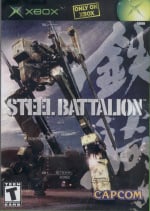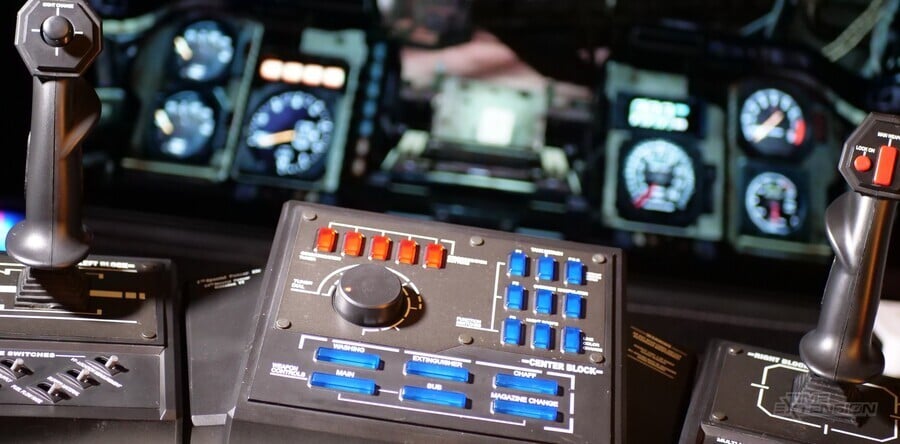
"What are you talking about? Are you trying to insinuate that I flooded a hotel room? That's outrageous!" bellows Hifumi Kouno, in pseudo-offence that gives way to raucous laughter which infects everyone in the room. We're at the Nude Maker office in Tokyo, interviewing the likeable rogue responsible for Steel Battalion on Xbox. A couple of weeks earlier, we'd interviewed the game's script translator, Shinsaku Ohara, who had told us about this alleged hotel incident. We'll get into that, but first: what was Steel Battalion?
It was an experiment as brazen as the hardware it came on. Microsoft's Xbox launched in the US in November 2001, while Steel Battalion arrived less than a year later, hitting Japan in September 2002 under its original name of Tekki. Microsoft was an unlikely newcomer to the console war, offering up what was basically a consolised PC in a box; the multiformat press was sceptical pre-launch. It was a hulking ribbed behemoth, and it was powerful. An advert for Alienware computers from 2001 helps contextualise things – Xbox's third-generation Nvidia graphics card was comparable to the more expensive PC builds, and while its SDRAM was less than any of them, all it had to do was play games, not multitask. Sure, you could technically build a more powerful PC, but for $300, the Xbox was considerably cheaper.
The games industry was entering a new trajectory, and into this maelstrom of upheaval arrived Steel Battalion. Two major aspects defined it. The most obvious was that controller. At the time, it was mind-boggling that such a thing was being considered – a bespoke device that was practically a console itself, to be used exclusively with one game, that would only function with said device. "To tell you the truth," shares Kouno, "during the development period, there were at least two occasions when the upper management requested us to consider including support for normal controllers."
Normal controllers? Madness – the game is the controller! Though it wasn't the industry's first attempt at such a large interface (NEC's unreleased Power Console predates it), it did at least reach the market. It came with three separate control panels which needed to be assembled, in addition to a sturdy set of three foot-pedals. On the far left was a 7-gear lever, from reverse, through neutral, to fifth gear. A horizontal joystick with a clickable thumb-stick at its top. Five toggle switches. In the centre block, a multi-positional communications dial, five comm buttons, a panel of nine secondary function buttons, plus six primary function buttons. On the right, a freely moveable joystick with lock-on, primary, and secondary fire buttons, six monitor buttons, and three start-up buttons. Finally, in the corner beneath a plastic safety hatch: the emergency eject button.
The hype in magazines and online was incredible. It captured everyone's attention. It also perhaps overshadowed a more interesting part of Steel Battalion; that eject button was to prevent your save data from being erased, because if you died in the game, all your progress died, too. Games of war are as old as war itself. But whether it's mental (chess) or dexterous (Space Wars), or anywhere in-between, as the word "games" imply, there is never any danger involved. You might lose some pride in defeat, but you won't lose your legs like Lieutenant Dan. The threat of save deletion added genuine fear and elevated Steel Battalion above other war games – in conjunction with the simulator control system, it catalysed into something magnificent, almost transformative.
We'll get into the PTSD of save deletion, but first, we need to understand how such an industry-defying game could exist. It isn't some obscure darling, it received volumes of coverage, but even so, we explain to Kouno our desire to discuss it. "In that case, I'll try to give answers which have not been written about before," he promises, adding, "The first official Nude Maker game was Steel Battalion. At the time, I was extremely frustrated with the game industry as a whole. After Human Entertainment closed down, I struggled for about six months as my project proposals were all rejected. This was while Nude Maker was still in the process of being established. I obtained money for living expenses by gambling. I played slots to win money for food. During this time, I would look at the upcoming line-up of new games, and they were all so boring. I felt this anger against the entire industry. You're all just making the same old shit. And then when Mikami-san called me on the phone, we instantly connected and understood each other, because we both felt the same kind of anger."

This revelation contextualises a lot regarding the Japanese games industry at that time. Shinji Mikami is, of course, the legendary creator of the Resident Evil series at Capcom. Not long after producing Steel Battalion, he would be heavily involved with Viewtiful Joe, Killer7, and God Hand, three more experimental games which strived to create a unique albeit divisive experience. In fact, looking at his portfolio chronologically, for two years prior to Steel Battalion, he was credited on no less than 11 titles in the Resident Evil / Dino Crisis series. In conjunction with Kouno's statement, it's clear that Steel Battalion was the start of his avant-garde phase.
"When I was at Capcom, I was in R&D 4 group, that Mikami-san led," explains translator Shinsaku Ohara, before describing how he was first introduced to Steel Battalion. "I don't know if you could get your hands on the original document, that Kouno-san brought. It's sekaikan or world lore was really deep. <laughs> Kouno-san's design doc, which he showed us, was sort of like an instruction manual for a Vertical Tank. Usually, it's like a PowerPoint presentation or a document that just says what the game is going to be. But it was more in the style of a pilot's manual. So it would have a picture of a Vertical Tank, and would talk about what it could do. Everything was so stylised. Even from the first pitch which he brought us."
"Unfortunately, that story isn't quite true," laughs Kouno, interjecting while we recount Ohara's interview. While a stylised manual may have been how the wider team was introduced to the concept, Mikami didn't need much convincing or explanation, as Kouno elaborates. "The original pitch document I showed to Mikami-san was only a single page, not a manual. I just described the core essence of the project, without any illustrations or drawings. Or, to put it another way, if someone were to read about the core essence but still not understand it, without pages and pages of drawings and additional detail, that person would never truly understand the point of the project. So I just described the essence of it in a single page. And the amazing thing about Mikami-san is that he understood it immediately from just that one page, and greenlit the project."
Kouno's biography on the Nude Maker website adds a little more flavour to this: "I recall receiving a call from Mr Mikami when I got home and being very nervous. When we entered production, our staff worked at Capcom for a joint development effort. There was a lot for us to learn. I feel that there will never be anything that comes close to Steel Battalion, in the sense that despite the general opinion that it is 'crazy', players enjoy it nonetheless."
From early previews, through reviews, and later interviews, this is a recurring theme. The sheer craziness of it all. The fact they thought they could do it and then just did it, despite the cost of R&D, the cost of the controller, the uncertainty of the markets, the occasional suggestion from upper management maybe to make it optional. There's a constant feeling of incredulity at the controller's existence. And yet, without the controller, there could be no game.
"Yes, it would be meaningless," agrees Kouno, before explaining how, in a way, it was intended also to revitalise Japan. "The 'Tekki Project' started during the transitional period between the last days of the PS1 and the beginning of the PS2, when the market was stagnating. We were deeply concerned about the future evolution of games. We felt a sense of crisis, like we had to do something new. Mikami-san wanted to do something different, something that would send an appeal to the rest of the industry and urge everyone to try new things. I felt the same way, and when I proposed my project, it was a perfect fit with his goals.
Understanding now how development duties were split between Nude Maker and Capcom, we broach the subject of Microsoft's involvement. A persistent internal rumour among the Western press was that, in an attempt to break into the Japanese market with its new Xbox, Microsoft offered an "unlimited budget" to create whatever it wanted.
"Hmm... I don't know, honestly," says Kouno, pausing to reflect. "It's not that I can't comment, I simply don't know. I'm fairly certain Microsoft did provide funding assistance, although perhaps not the entire budget. Before Microsoft became involved, there was no way the Xbox could accept the input from all the buttons on the Steel Battalion controller. So they helped us make an input driver, and generously provided assistance."
We're wondering if, before "Microsoft became involved", there had been plans for other systems. The PS2 or GameCube maybe? "When development started, I don't think the GameCube had come out yet," begins Kouno, before revealing that the team had indeed considered Sony's console. But as many will recall, the PS2's unique architecture had a steep learning curve, especially in those early days. For all the promotion Sony gave regarding its "Emotion Engine", the hardware put off several developers, including Nude Maker.
"The choice was only between the PlayStation 2 and the Xbox. At first, we wanted to release it on the PlayStation 2, because that's where the larger market existed, particularly within Japan. But there were also technical considerations related to what our team could accomplish. We still weren't fully versed with the PlayStation 2 hardware on a technical level, so the graphics we created looked horrible. Because of this, we switched over to the Xbox."

As alluded to earlier, the boldness of this entire endeavour tends to overshadow another equally as important part of Steel Battalion, and it's easy to get carried away talking about how cool the rig is. But we also need to talk about perma-death. Steel Battalion is not the only game to feature this, obviously. Hideo Kojima, in a 2004 interview, infamously described wanting to create a game that disintegrates with game over; Demon's Souls (2009) would rob you of hard-earned souls in death; Lose/Lose (2009) would delete itself and random computer files; NieR (2010) requires total save deletion for the final ending; One Life (2015) locks you out if you die. But before 2002, there wasn't much at all. Gruntilda in Banjo-Kazooie (1998) deletes your save if you cheat too much; LHX Attack Chopper (1990) deletes your save if you're KIA; while Sub Mission (1986) erases itself!
Steel Battalion doesn't become unusable if you die (thankfully, since it cost $200 / £130), but should your avatar be killed – or you waste enough resources to be 'relegated' (which means you survive the explosion of your VT, but lack the funds to purchase another) – your progress is erased and you need to start over. This goes far beyond the perma-death found in roguelikes or early retro titles, where death is expected and you might lose an afternoon's progress. After spending weeks or more waging a bloody campaign across 23 missions, on six difficulty levels, you'll have the realisation you actually have something tangible to lose.
War has a permanent place in games. But it's often de-fanged of its brutally frightening and viscerally unpleasant nature. Unlike in games, dead soldiers do not come back to life. By threatening the removal of something precious, Steel Battalion challenges the status quo and becomes more terrifying than the scariest survival horror. Few other games are capable of inducing such extreme amounts of raw, almost mind-destroying fear.
This makes it the closest media alternative to actual combat, despite the fact you're in a giant mecha. Forget books, cinema, or news footage – games are uniquely placed to offer interactivity; you're an active participant, not a passive recipient. Steel Battalion, however, adds permanent causality to your interactions. Every mission becomes the one you might die in. In truth, when the klaxon sounds, you have plenty of time to hit eject, but that klaxon becomes seared into your psyche, producing a gut-wrenching Pavlovian response every time. There is no solace, few places to hide in missions, and there is no pause button; the VT becomes a second skin, and every cannon shot is felt. The more hours you clock up, the more painful death becomes. Losing and dying are no longer options past a certain point. It is here that Steel Battalion pulls you into its trenches and won't let you leave.
There are so many memorable events of the campaign: skulking through city ruins wary of ambush; hunting down and executing deserters who broke under pressure; air-dropping into a hot zone filled with clashing forces; riding an elevator into a secret base not knowing what's waiting for you; calling in a supply chopper and watching it go down in flames due to intercepting fire; popping the plastic lid on the ejection button and gently stroking it, not because you're in danger, but because you just never know. If we were to pick just one scenario to describe, it would be Mission 12, 'Air Cavalry Assault', which feels like something straight out of Apocalypse Now. Your battalion is under siege from a fleet of attack helicopters, and you need to move fast and fight hard to survive.
The easiest method is to select a Prominence class VT with Optional Armour module, coming pre-installed with Multi Missiles, and setting the radar to short-range. The Multi Missiles will quickly take out the helicopters. However, the true battle-hardened shell-shocked veteran will forgo the armour, preferring as much rapid-fire light weaponry on both arms as their VT will allow. You'll want to fire both primary and secondary weapons simultaneously. Wasting ammo? No. Good men are falling, and if you don't repel the attack, so might you – along with all those weeks of progress.
A lot of the day's discussion was on design philosophies, inspirations, and maintaining one's vision. To understand the mindset that created these scenarios, we've amalgamated several answers.
"When I write a game proposal, I simulate the total game in my head in detail, to the point where I can mentally play and see it unfold in my mind," says Kouno. "When the game in my head is fun, I know that the real game will also be fun, as long as I follow the design in my head. That gives me the inner confidence to proceed. While at university, I also belonged to a strategy and wargaming club. All games are fantasy in a sense, and since it's fantasy, what's wrong with something that is a little aspirational or escapist? Recently there's more emphasis on a worldwide or market-focused stance. Honestly, with the big game companies, the opinions of the sales and marketing divisions are prioritised. And if you listen to their opinions, you feel forced to play it safe to ensure you can recoup your investment.
"In that case, if you want to make something that deals with a sensitive subject matter, or something original, you have to look elsewhere. When I was making Steel Battalion, the one thing that really pleased the Capcom staff was how smoothly the development went from the initial proposal to the finished product. In most cases, there is a lot more trial and error, but I was able to deliver a successful game without making significant changes once we'd established our design. The people at Capcom were very happy about that. It's the question of how much to adapt your work to the market, regardless of whether it's the domestic or overseas market. If you ignore that question, and just create what you think is fun, you will find at least some measure of success. This was the case for me with Clock Tower and Steel Battalion. So sticking to your own ideas in the face of market expectations can result in good games."
With such antithetical design beliefs, and such an expensive and unusual piece of hardware, forums of the time were delirious with speculation. Keep in mind YouTube was not a thing yet, and magazines still reigned supreme; information was drip fed. Enthusiasts contemplated the possibilities of all those buttons; seeing the Oxygen Supply System switch, there was talk of whether you'd have to shut the air supply in emergency situations. Would the dial tuner allow you to listen in on enemy communications? A lot of this conjecture did not come to pass, but it's worth remembering because it encapsulates an era where limited information fostered greater imagination. The most intense debate was whether it would even leave Japan at all; this was still a time when Japan would receive prominent or unique games, and despite publisher promises, there was no guarantee of a release in America. Europeans had already resigned themselves to importing, since the continent was regularly overlooked (it did actually get a PAL release in 2003, for the record). We imported an American copy at the time, and in the interview, described the concerns of our peers.
"That's understandable," chuckles Kouno, before explaining that actually, the inverse had been a possibility. "As far as the actual game was concerned, everyone was confident and supportive of my decisions, so I wasn't too worried. But on the business side, there were questions about whether or not to release it in Japan, and whether such a large controller would even succeed in the market. It became a political issue within Capcom, and the person who negotiated for me and argued on my behalf was Shinji Mikami-san, and later the producer, Atsushi Inaba-san."
Kouno mentions Mikami and Inaba regularly during the interview, and they had a strong influence during development. In EDGE issue #111, Inaba went into great detail on the R&D aspect, stating: "It's been a real nightmare for engineers to meet our requests on this project." Amusingly, Kouno shared a personal anecdote which contextualises that quote.

"When the project was nearly complete, the durability of the controller became a significant concern," begins Kouno. "We were worried that the foot pedal would break if you step on it too hard. Mikami-san asked about it, and Inaba-san said it seemed fine so far. <laughs> Mikami-san became furious, and said: 'Do you think that's enough for a durability test? All of you, go test it now!' So we lined up a bunch of the controllers in an empty room, <Kouno stands up> and the whole staff, about 20 of us, stomped on the pedals over and over for two hours straight. <aggressively mimes stamping on the pedals> When someone got tired, someone else would take their place and keep stomping. None of them broke; they were all fine that day. When Mikami-san saw it with his own eyes, he was finally satisfied. During development, several of the foot pedals had broken; there were also one or two that broke during debugging and test play. But luckily, none of them broke during the stomping test."
After all these tribulations, it was eventually released, and Capcom put a lot of effort into making the sure the localisation lived up to the standards of the controller. If you're going to risk investing so much money into R&D, you can't afford to scupper the project through a roughshod cut-corner translation. The English was baked in from the start, and as any veteran who survived the Hai Shi Dao campaigns of 2080 and 2082 will attest, the tone and writing were excellent.
"They wanted me in charge of translating everything, so all my shortcuts on the internet were just military related," explains Ohara, who went to great lengths to make the game feel internally consistent. "For example, I didn't know what these missiles were called in English, so I had to find out. Anything to do with English I had to create, do research on, and make sure it's authentic. I'm not a military specialist, but to a certain level, I had to make sure it was legitimate. They also wanted me to come up with a name for the Operating System that Vertical Tanks use. It was called C.O.O.S. <spells it> I came up with the name; it was meant to stand for "Combat Oriented Operating System". To make it more real. All those little things helped sell the world. We also went voice recording with Kono-san. Erm... He might get mad if I told you this..."

The hotel story! We assure Ohara that Kouno is a cool and laid-back guy, and no doubt would love this story to be shared. Ohara obliged our request.
"We were staying at the Renaissance Hotel in Hollywood. We would be recording from 10am until 6 in the evening, and then we'd go out to eat. But being jetlagged and staying in a recording room all day without windows really screws you up in terms of time adjustment. I think late evening, maybe 11pm or so, I get a call from Kono-san, saying, "Ohara-san, there's a problem!"
And I said, "What is it?"
So he replies, "It's my bathtub!"
And I say, "What happened?"
"I turned on the tub, to soak in it," he says. "And while I was waiting for it I just crashed on my bed, and let the water go. I didn't stop it. So my room is all wet, and I need to have it taken care of."
So I said, "OK, I'll be there right away." And I go to his room, and even before I reach his room, the hallway is all wet. The carpet is all water. I go into his room, and I said, "Konou-san, how long have you let this go on?"
"Maybe two hours?"
<everyone laughs>
So I call the front desk and they come up with a vacuum to suck up all the water.
And I just said, "Konou-san, they said it's going to take about an hour. It's late, there's nothing I can do here anymore, so I'm going to let you go, and let myself go." And then I added, "You know, leave this guy maybe a tip of $20 or something, after he's done, and you should be OK."
I can see how that could happen, but it was the first time I had actually seen it happen. <laughs>
We've heard of rockstars trashing hotel rooms, but this was a first for us. We had to confirm, did it really happen like that?
"It did. Yes, it's unbelievable," laughs Kouno, clearly still amused years later. "I apologised a hundred times. It was mortifying. I kept saying 'Sorry, sorry' to the hotel staff. The interpreter who accompanied me laughed and said they'd never seen anything like it. Japanese hotels have baths with a hole built in, so that the water never goes above a certain level. But this American hotel didn't work like that, and the water overflowed the tub and soaked right through the carpet. They moved me to a different room after that. <laughs> I shouldn't have left the water running without being there, but I wanted to take a long soak in the bath. I apologised a ridiculous number of times. I didn't have the vocabulary to say anything else. At least I got practice apologising in English!"
Internal politics and flooded hotels aside, Steel Battalion was completed, localised, and ultimately released in three major territories. Famitsu scored it a respectable 35/40 and according to sister-magazine Famitsu Xbox, it reached the number one spot for Xbox games in Japan. The Americans especially loved it, with Game Informer scoring it 9.5 out of 10, GamePro scoring it 4.5 out of 5, and Electronic Gaming Monthly's three reviewers giving 8, 9.5, and 8 out of 10. They praised the save system's ability to make them sweat and, while acknowledging them, concluded the shortcomings were not deal breakers. They really invested themselves in the fantasy of it.

European reviews were less kind. Eurogamer and EDGE both scored it 6 out of 10. Both came down heavily on it for pop-up and poor AI, and both seemed to dislike the save system rather than embrace it. EDGE especially whined about having to redo a level if they failed – presumably, they would have been happier just watching a theatrical reinterpretation of the game. EDGE even went as far as suggesting players use a third-party memory card to back up save data to offset the dangers of deletion, which completely misses the point. While both reviewers raise legitimate issues, we can't help but wonder if they just weren't the target audience for the game.
We're not going to attempt to be clever here: this author is a Steel Battalion apologist. Yes, those flaws are undeniable. The pop-up, the poor AI, the fact a lot of buttons and switches are seldom used, the lack of customisable soundtrack. The game doesn't reach the maximum potential it has. But if you give yourself up to it, and ignore the flaws in favour of what it does offer, Steel Battalion provides an experience unlike any other. There is no alternative mecha game with this much realism for home use, this is it. BattleTech is a great alternative, but where are you going to find a working set-up? Not even the Kinect-powered Xbox 360 sequel to Steel Battalion could match the original's high water mark – and it had FromSoftware on development duties! If you're the kind of player who can justify the price of entry, then you are accepting the flaws because you very specifically want as realistic a simulation as can be found for home use. (As for your incompetent AI wingmen, we assume they're just suffering from really, really bad PTSD and are turning on the spot due to confusion.)
It's worth noting that Kouno himself is aware of the complaints and is quite open in detailing how much more he wanted for the game. So much more! In fact reading previews from back in the day, with various staff, reveals the team had some crazy ideas, including a glass cover which would need to be shattered to eject (abandoned due to player safety concerns). We ask Kouno if he followed the reception and what he'd have done differently.
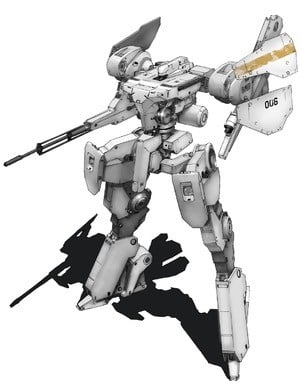
"I've been checking Metacritic since Steel Battalion," he reveals. "I also read the review comments on Amazon sites. I can't understand everything, but I try to read them. One thing I wanted was a smooth shift lever, not a gear system. If you look at Japanese robot anime, there are these scenes where the pilot engages the Vernier thrusters or the afterburner by pushing on the lever like this, gweeeeee. <moves hand, smooth motion> I'm disappointed that we couldn't do that. In Steel Battalion, the lever goes ka-ka-ka-ka. <stilted movement>"
This opens up a fascinating line of discussion which reveals how different the game might have ended up. We hand Kouno a notepad and, knowing the dictaphone is running, simply let him talk and sketch freely about earlier ideas. He's about to describe several possibilities.
"There's also a manga called The Five Star Stories that features scenes in which a person controls a robot by communicating with a humanoid computer. I wanted to do something like that, make certain commands voice-activated. So you could say something like, 'Search for hostiles!', while performing other actions with the controller."
"Another thing was the setting. Rather than a wartime setting, I wanted to make the game about rescue robots, like the Thunderbirds series. So even though you might have occasional scenes about battling terrorists in an urban zone, the game would basically be about saving people buried under rubble by controlling a robot arm or manipulator to dig them out. But things became difficult when it came to the robot design, such as how to visually express the control over the manipulator, and contact with objects such as walls. So it was simpler to do a wartime setting. Of course, now there are touch-screen devices, so this idea finally seems feasible. I'd like to make something like that one day."
This is surprising and seems at odds with the earlier statement on the design not changing much. The game we ultimately ended up with was quite different? "Yes, compared to the project in the initial planning stages," he clarifies.

It's important to compartmentalise the various stages of creation in chronological order. The initial fanciful ideas when on the phone to Mikami and the accompanying nervousness; the single-page formal proposal to Mikami and Capcom which described the project's core essence, but had no illustrations; a PowerPoint presentation defining the controller's key aspects; and the stylised manual to enthuse the rest of the team, as seen by Ohara. We mention we'd love to see some of these documents...
"At the time I was working inside Capcom, so the documents were all stored on Capcom's computers, and unfortunately I was not able to take them with me," laments Kouno. "However, even though there were prototypes, the overall design did not change drastically. In the beginning, I created a PowerPoint presentation that laid out the controller design in detail, and the controller was ultimately based on that file. I can draw it for you. I still remember it distinctly, so I can draw it easily from memory."
As he explains it, while the design vision of three pedals, two control sticks, a gear shift, plus buttons (with eject!) remained consistent until the end, it was the scope and complexity of each component which was amended as needed. Again Kouno brings up the gear shift, drawing a sketch of how he'd have wanted it.
"We never made a prototype or anything, but I really wanted to make a lever like this, with a button for each finger. <sketches lever> But this would have been way too expensive, so it was cut at an early stage of development. It wouldn't have been possible with the manufacturing methods back then. I did a lot of scratch building in my head, but I'm the type of person who hates scratch building after the team has already started working, so the gear design was already decided to be like this once the team was put in motion."
The ambition and courage to create Steel Battalion was very much a reflection of the times; new entrants into the hardware market coupled with developer frustration at a risk averse industry. Despite the advance of technology and manufacturing, we'll probably never see another game like it again.
"Probably not. Maybe if we received some money from Microsoft again," agrees Kouno, before revealing something unexpected. "Some time ago, I had a drink with an acquaintance who works at Microsoft, and he told me that people at Microsoft wanted me to work with them on a space opera project, and someone had said to bring me in to create a starship controller like a ship's wheel. That was probably just the alcohol talking, though. <laughs>"
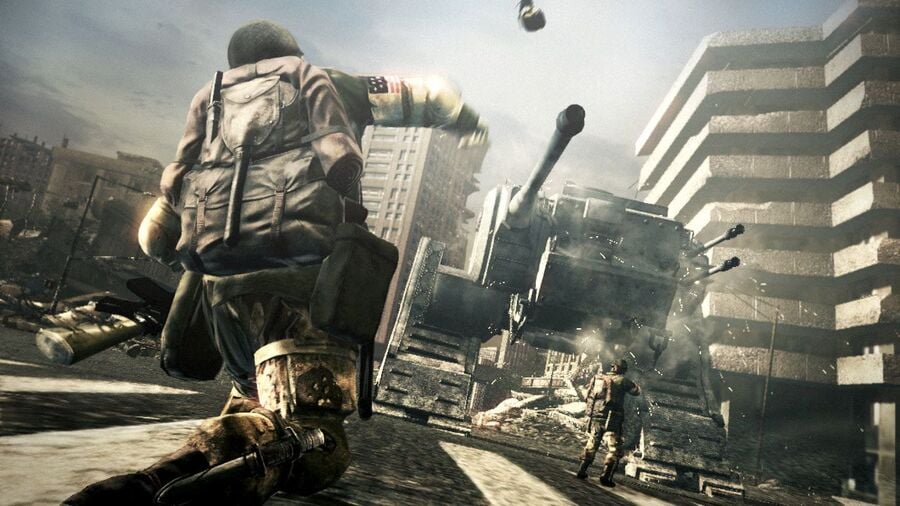
Steel Battalion did at least receive the promised online-only add-on Line of Contact, in February 2004. For a time, it featured a persistent online campaign mode, and you'll find, if you trawl old forums, that when it worked correctly, it provided an experience even better than the original. Kouno's online biography states:
My first attempt at a network-based game. Infrastructure wise, it was about five years too early for me to release this game. There were a lot more players than we originally expected, with much higher levels of skill than we thought. If I were to join a mission, I would be killed instantly. I wonder which VTs are the most popular? My favourites are the Vitzh, Rapier, and the Yellow Jacket.
At this point, we should probably broach the subject of the aforementioned Steel Battalion: Heavy Armor on the Xbox 360. "Frankly, I hate that title," replies Kouno. "We didn't receive any offers at all. But I can understand why Capcom didn't contact us. Development is difficult when it comes to the HD consoles. Capcom has been very good to us. On the other hand, common sense dictates that if a creator produces a title, and then another person creates a derivative work without permission or consultation, the original creator will not be happy. I must admit I do feel that way, regardless of whether the content is good or bad. The sequel was apparently being developed in secret, and about one week before they announced it at a game show, the producer came to Nude Maker and told me. So they did at least come and explain the situation, and I'm thankful for that."
Our time is almost up, and we get ready to part, but there's one topic we still want to mention... If you've read this far, the question you've probably been wondering is: did the author convey to Hifumi Kouno that when playing Steel Battalion, he'd requisitioned a caravan, put a portable TV inside, and built a cockpit out of cardboard boxes for full immersion? Yes, yes he did describe this, and that he'd rescued Arnold, removing in-game weight limits, and also finished it on Armageddon difficulty.
"That's a great setup!" he exclaims jubilantly. "It was great to have the chance to talk with someone who enjoyed it so much."
No, good sir, it was our pleasure to interview the director of this masterpiece.
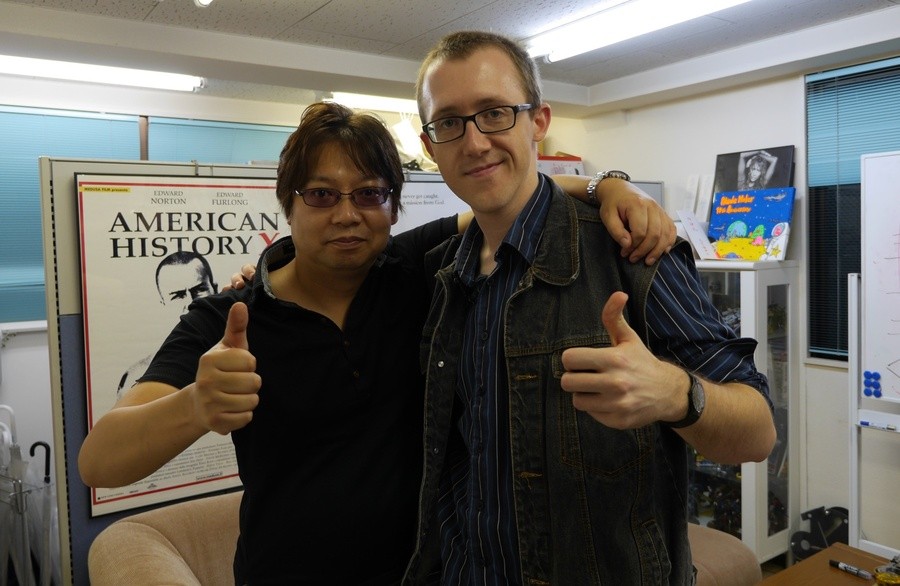
John Szczepaniak is the author of The Untold History of Japanese Game Developers trilogy, which has recently had a fifth offshoot volume released. He keeps saying he's getting out of writing, but just when he thinks he's out, they pull him back in.
Thanks to Alex Olney for helping source the Steel Battalion controller seen in this feature.

